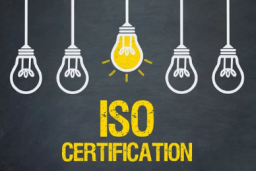

In today’s interconnected and competitive global market, organizations across industries strive to demonstrate their commitment to quality, efficiency, and sustainability. ISO certification, developed by the International Organization for Standardization (ISO), provides a universally recognized framework for achieving these goals. ISO standards cover a wide range of areas, from quality management to environmental responsibility, offering businesses a structured approach to improving processes and meeting stakeholder expectations. By achieving ISO certification, organizations signal their dedication to excellence, compliance, and continuous improvement. This article explores ISO certification through four key subtopics: its purpose and scope, key ISO standards, benefits for organizations, and the certification process, providing a comprehensive understanding of its role in fostering trust and operational success.
ISO certification is a formal recognition that an organization’s processes, products, or services comply with specific ISO standards. The International Organization for Standardization, established in 1947, develops these standards to promote consistency, safety, and efficiency across industries worldwide. The purpose of ISO certification is to ensure that organizations meet internationally agreed-upon benchmarks, enhancing their credibility and ability to compete in global markets.
The scope of ISO certification is vast, covering industries such as manufacturing, healthcare, IT, construction, and food safety. Standards address various aspects of operations, including quality management (ISO 9001), environmental management (ISO 14001), information security (ISO 27001), and occupational health and safety (ISO 45001). Each standard is tailored to specific organizational needs, ensuring relevance across diverse sectors. ISO certification is voluntary, but many organizations pursue it to meet customer requirements, comply with regulations, or gain a competitive edge. By aligning with global best practices, certified organizations contribute to safer products, sustainable practices, and improved customer satisfaction.
ISO offers over 24,000 standards, but a few are particularly prominent due to their widespread adoption and impact. Here are four key ISO standards:
ISO 9001: Quality Management Systems: The most widely recognized standard, ISO 9001, focuses on ensuring consistent quality in products and services. It emphasizes customer satisfaction, process efficiency, and continuous improvement, applicable to any industry.
ISO 14001: Environmental Management Systems: This standard helps organizations minimize their environmental impact by managing waste, energy use, and emissions. It is critical for businesses aiming to demonstrate sustainability and comply with environmental regulations.
ISO 27001: Information Security Management Systems: Designed to protect sensitive data, ISO 27001 provides a framework for managing information security risks, including cybersecurity, data breaches, and compliance with privacy regulations.
ISO 45001: Occupational Health and Safety Management Systems: This standard focuses on creating safe and healthy workplaces by identifying and mitigating risks, reducing workplace accidents, and ensuring compliance with safety regulations.
These standards are regularly updated to reflect industry trends and technological advancements, ensuring their relevance. Organizations can pursue certification in one or multiple standards, depending on their goals and operational needs.
ISO certification offers a range of benefits that enhance organizational performance and market position. These include:
Enhanced Credibility and Market Access: Certification demonstrates compliance with global standards, building trust with customers, partners, and regulators. It is often a prerequisite for entering international markets or securing contracts with large organizations.
Improved Operational Efficiency: ISO standards promote streamlined processes, waste reduction, and consistent performance. For example, ISO 9001’s focus on process optimization can lead to cost savings and higher productivity.
Customer Satisfaction: By prioritizing quality and reliability, ISO certification ensures that products and services meet customer expectations, fostering loyalty and repeat business.
Regulatory Compliance and Risk Management: Certification helps organizations align with legal and regulatory requirements, reducing the risk of penalties or operational disruptions. Standards like ISO 27001 and ISO 45001 also mitigate risks related to data breaches and workplace safety.
Additionally, ISO certification fosters a culture of continuous improvement, encouraging organizations to regularly evaluate and enhance their processes. This not only drives internal efficiency but also strengthens brand reputation, making certified organizations more attractive to stakeholders.
Achieving iso certificering is a structured process that requires commitment, planning, and ongoing maintenance. The key steps include:
Gap Analysis: Organizations assess their current processes against the requirements of the chosen ISO standard to identify gaps and areas for improvement.
System Development and Implementation: Based on the gap analysis, the organization develops a management system aligned with the ISO standard. This involves updating processes, training employees, and establishing documentation and performance metrics.
Internal Audit: An internal audit is conducted to verify that the management system meets the standard’s requirements. This step helps identify and address any non-conformities before the external audit.
Certification Audit: An accredited third-party certification body conducts a two-stage audit. Stage 1 reviews documentation and readiness, while Stage 2 evaluates the system’s implementation and effectiveness. If successful, the organization receives certification, typically valid for three years, with annual surveillance audits to ensure ongoing compliance.
The certification process can take several months, depending on the organization’s size, complexity, and readiness. Maintaining certification requires regular internal audits, management reviews, and updates to reflect changes in processes or standards. Organizations must also stay informed about revisions to ISO standards to ensure continued compliance.
ISO certification is a powerful tool for organizations seeking to excel in a competitive global landscape. By adhering to internationally recognized standards, businesses demonstrate their commitment to quality, safety, sustainability, and customer satisfaction. Whether pursuing ISO 9001 for quality management, ISO 14001 for environmental responsibility, or other standards, certification drives operational excellence and opens doors to new opportunities. The process, while rigorous, delivers significant benefits, including enhanced credibility, efficiency, and risk management. As industries evolve and consumer expectations rise, ISO certification remains a cornerstone for organizations striving to build trust, achieve compliance, and lead in their respective fields. By investing in ISO certification, businesses position themselves for long-term success and contribute to a safer, more sustainable world.
| No comments yet. Be the first. |